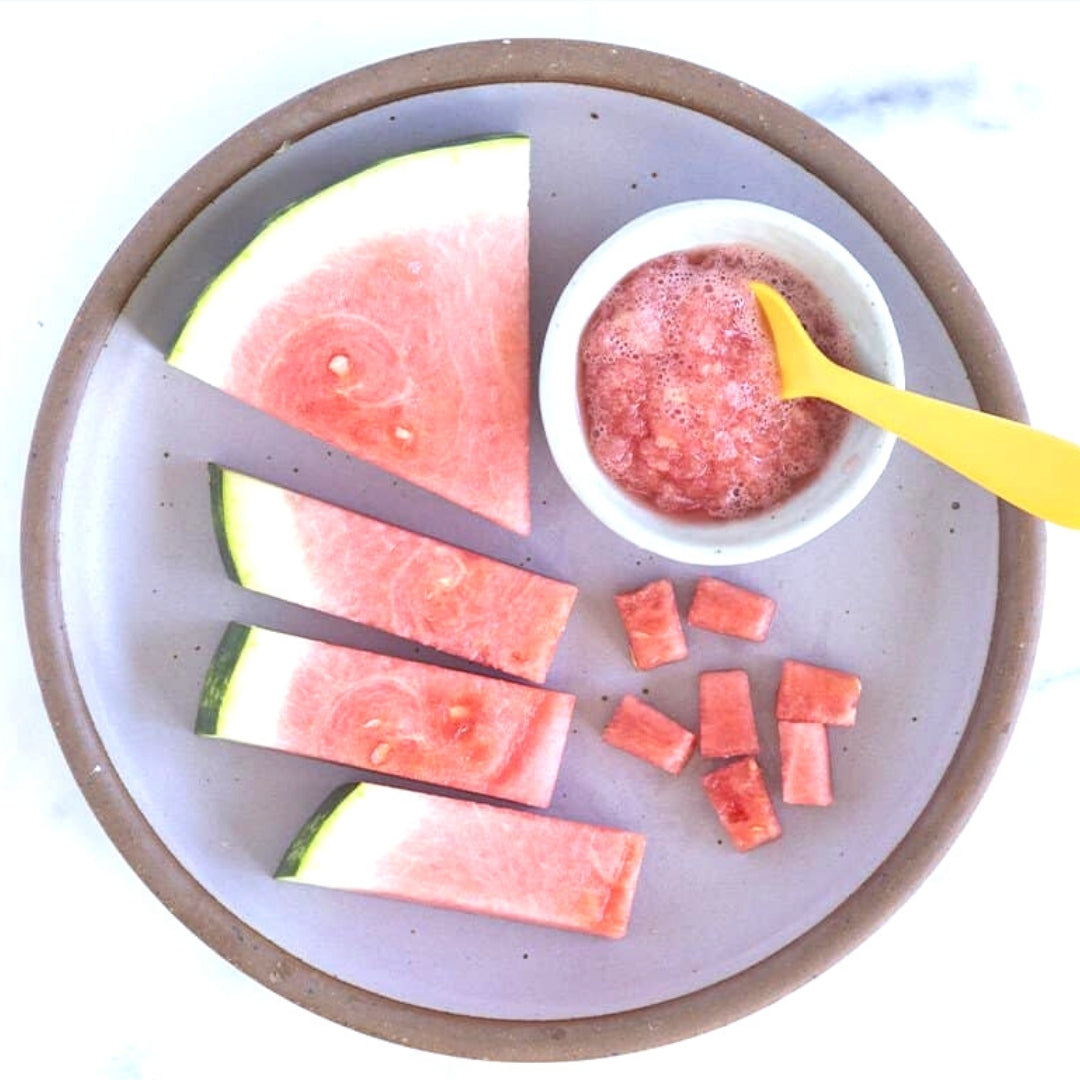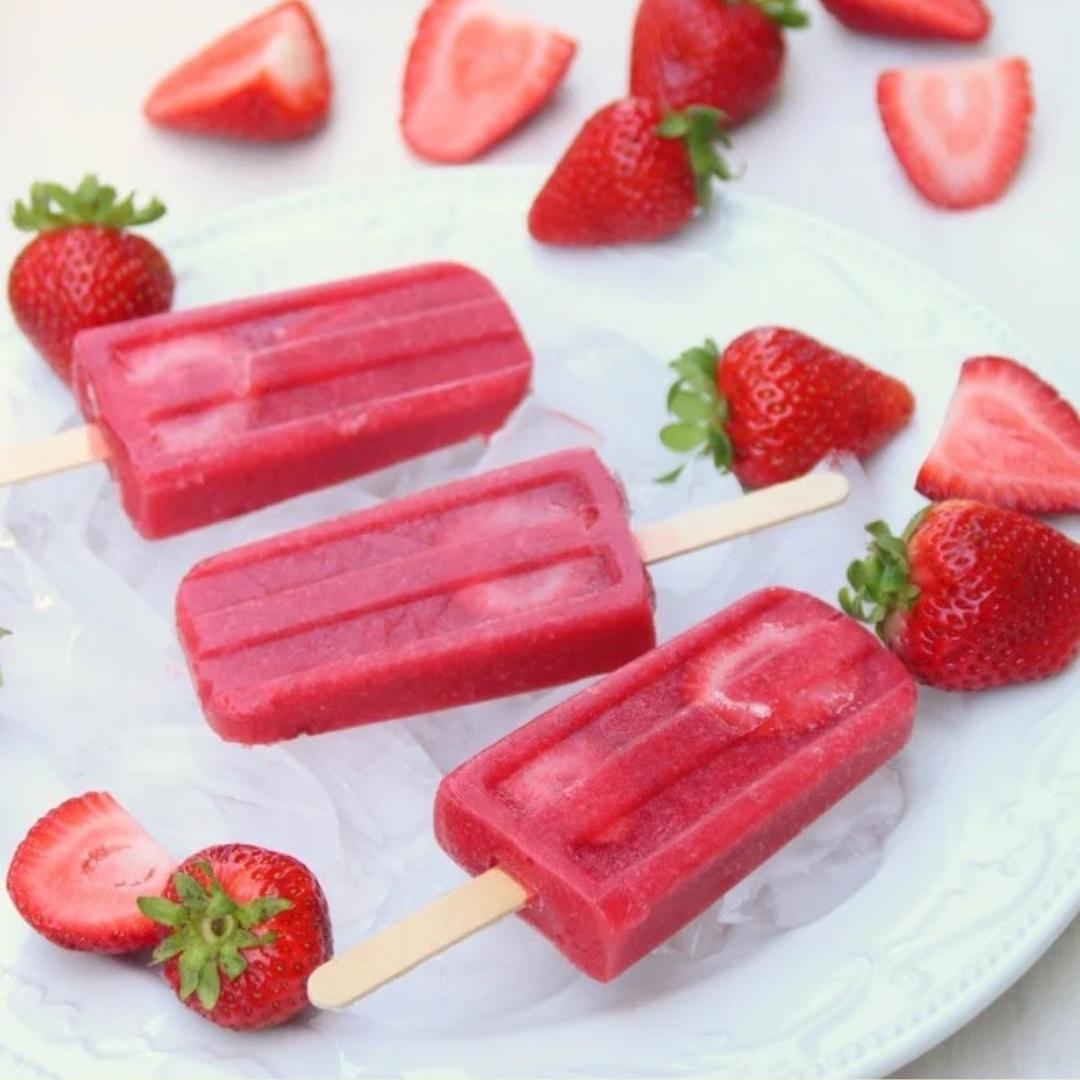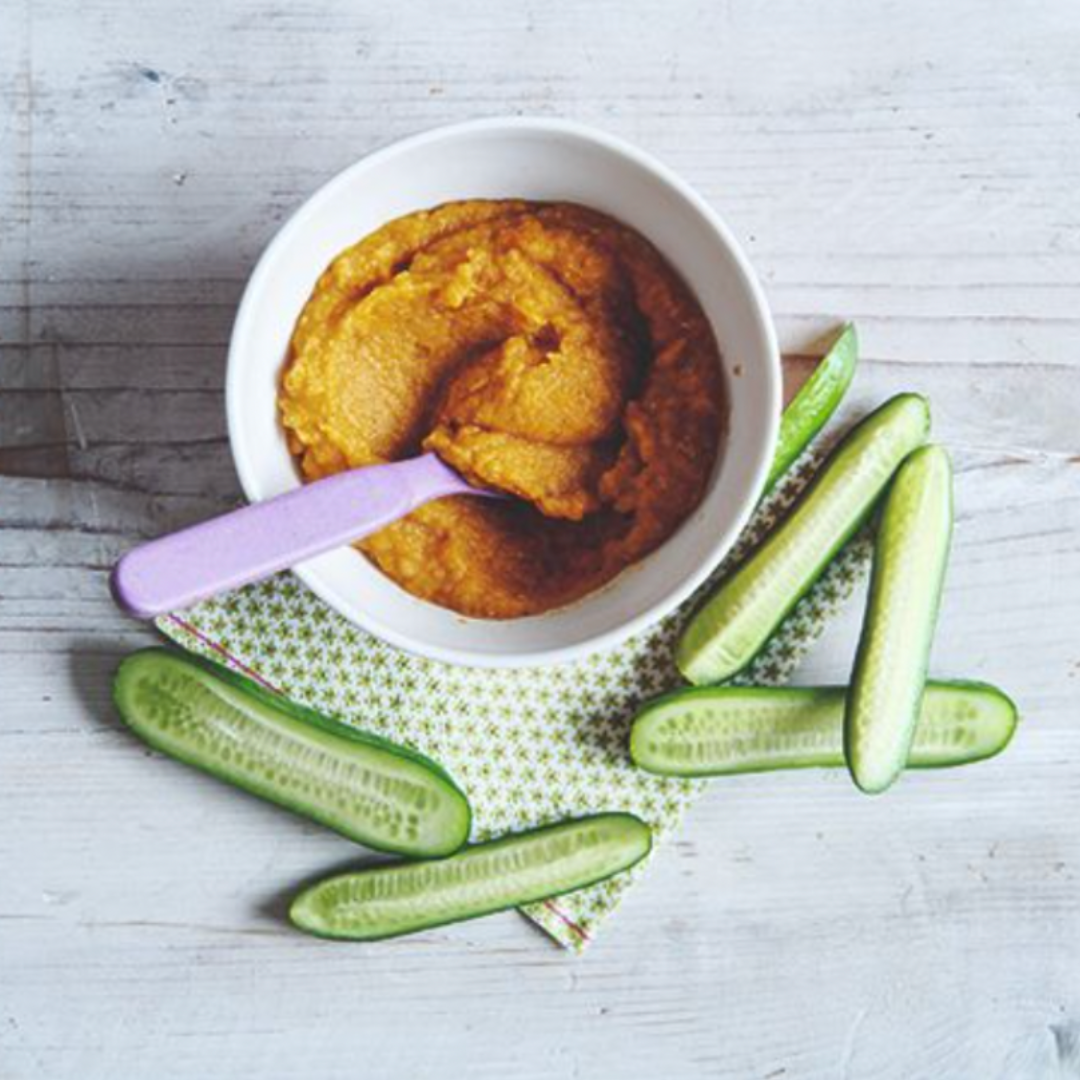Learn how to make watermelon accessible for everyone, including adults who find swallowing difficult, for weaning babies and for toddlers too!
Nutrition in Watermelon
Watermelon is a source of vitamin A, vitamin C, potassium, and vitamin B6, and it’s packed with hydration. In fact, it’s over 90% water, which means that it’s a great way to help the kids stay hydrated in warmer weather.
Due to the vitamin C content in the melon, you can serve it with iron-rich foods to help increase the body’s ability to absorb the iron.
Preparing Watermelon
1. Wash the watermelon. This can help remove any bacteria it picked up in transit from the farm or at the store.
2. To serve as a puree for adults with swallowing difficulties or weaning babies, dice the watermelon, discarding the rind, and blend gently into a smooth mixture.
3. To serve weaning style, cut melon into rounds, then into sticks or wedges. Leave some of the rind on so it’s easy for baby to hold.
Baby Led Weaning
Watermelon for 6-Month-Old BabyFor a baby starting solids around 6 months, you can incorporate watermelon in one of two ways: as a puree or baby-led weaning style as a stick (using very ripe melon that is soft) or a wedge that baby can feed themselves. Both methods are below.
(Hard, unripe melon could be a choking hazard if baby bites off a large piece, so be sure yours is soft and easy to mush when you press it between your fingers.)
Watermelon for 9-Month-Old + Baby
Once baby is about 9 months, you can dice up ripe, soft watermelon into very small pieces so they can pick them up as finger food. Remove all seeds and make sure the melon is soft to ensure that it’s easy to chew.
TIP: It’s easiest to do both methods with seedless watermelons.
Recipe Source and credit: www.yummytoddlerfood.com






